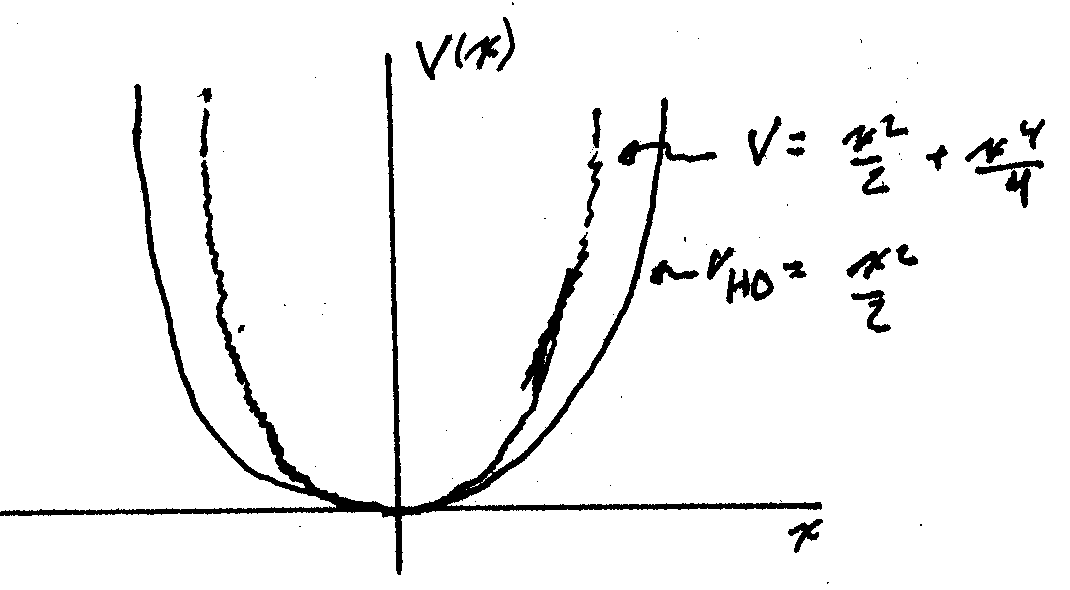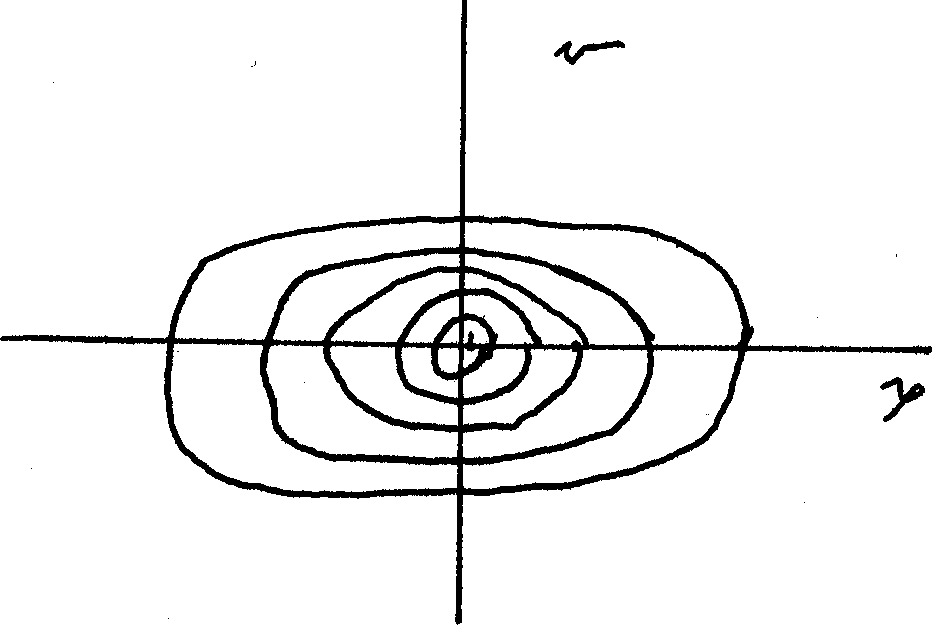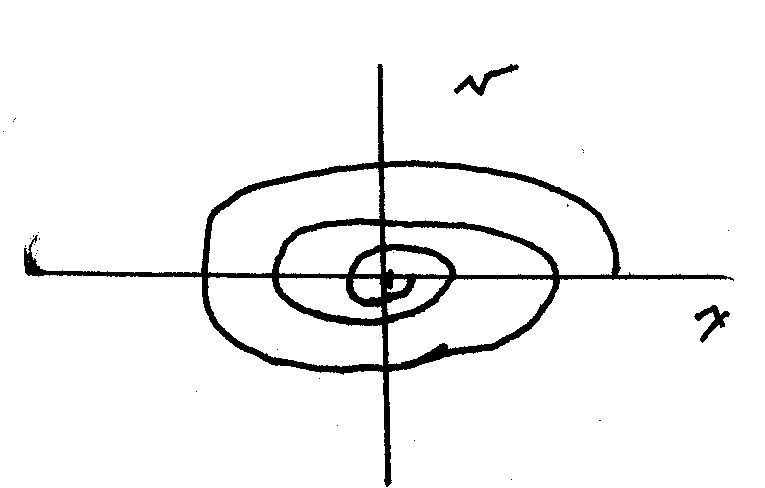Next: Two Wells System Up: Duffing_story Previous: Harmonic Oscillator Limit
Setting ![]() (usual value in standard analysis of
the model) changes the potential well shape.
(usual value in standard analysis of
the model) changes the potential well shape.

This changes the shape of the phase space portrait. The extra stiffness of the beam squares the trajectories by imparting a stronger impact on the beam to push it in opposite direction than the force resulting from a parabolic potential by itself could have.

Dissipative System
The phase space portrait with ![]() not zero
shows that the origin,
not zero
shows that the origin,
![]() ,
, ![]() remains an attractive
equilibrium point
or fixed point. This point
makes the RHS of the ODEs equal to zero. It corresponds
to a minimum energy point. Trajectories spiral toward this
fixed point.
remains an attractive
equilibrium point
or fixed point. This point
makes the RHS of the ODEs equal to zero. It corresponds
to a minimum energy point. Trajectories spiral toward this
fixed point.

Plot the energy corresponding to each of the initial conditions used in building the phase space portrait above. Note the energy dissipation.
Michel Vallieres 2014-03-04